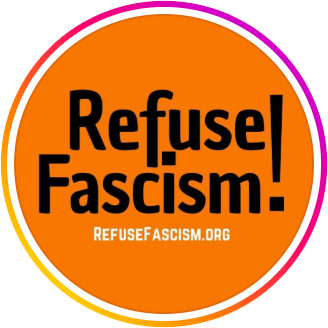Through many movements for social justice, “Which Side Are You On?” has become an anthem that issues a direct challenge to the decent people to choose a side – will you be complacent and complicit in the face of profound injustice, or to join with others to move heaven and earth to change the course of history?
We are in such a time now, confronted with the choice that has profound stakes not only for people in this country but all over the world. As the call for November 5 in DC begins:
Fascism is not a looming threat. It is upon us now. Humanity’s only hope is for the decent people of this country to rise in our millions. We cannot wait for future and rigged elections. We must drive the Trump Fascist Regime from power.
It is time for every decent person, millions of us strong, to choose a side. Will you accept a fascist regime barreling over humanity, or will you join the nonviolent struggle to drive the Trump Fascist Regime from power? November 5 in DC launches the Sustained Unrelenting Struggle of Thousands Growing to Millions in the Capital, United Around the Single Demand Trump Most Go Now! We will not stop until the regime is removed from power.
Come all of you good people
The Trump Regime Must Fall
We cannot stop our protests
The world must hear our call
Which side are you on, friend?
Which side are you on?
Which side are you on, friend?
Which side are you on?
Fascists in the White House
We must drive them out
Let’s take the streets we march now
We sing and scream and shout
Which side are you on, friend?
Which side are you on?
Which side are you on, friend?
Which side are you on?
Fascism is upon us
With that we can’t abide!
You’ll either be with MAGA
Or on the people’s side!
Which side are you on, friend?
Which side are you on?
Which side are you on, friend?
Which side are you on?
The future is unwritten
It is up to us.
If you don’t take a stand now
You have given up.
Which side are you on, friend?
Which side are you on?
Which side are you on, friend?
Which side are you on?
Millions marched against them
And rallied sea to sea!
Now it’s time to drive them out
In the name of humanity!
Which side are you on, friend?
Which side are you on?
Which side are you on, friend?
Which side are you on?
Which Side Are You On? A Brief History
“Which Side Are You On?” was written in 1931 by Florence Reece, the wife of a union organizer in Harlan County, Kentucky, during the brutal coal miners’ strikes. The song emerged out of violent “Harlan County War” labor conflicts, where coal companies and local authorities repressed miners seeking union rights. Reece wrote it after police raided her home looking for her husband; she tore a calendar sheet off the wall and wrote the lyrics on the back. The song quickly became an anthem of the labor movement, sung at picket lines and union meetings across the U.S. for decades.
In the 1950s and 1960s, the song was embraced by the Civil Rights Movement. Activists adapted it to their struggle, preserving the call-and-response structure and moral urgency. Performers like SNCC Freedom Singers, Pete Seeger, and Bernice Johnson Reagon sang versions that reframed the union struggle as part of a broader fight for racial justice. Lines were altered to reference segregation, racist violence, and the demand for equal rights, making the song a bridge between labor and civil-rights activism.
The song continued to evolve. In more contemporary movements, it has appeared in protests for LGBTQ+ rights, immigrant rights, Black Lives Matter, and labor organizing in service industries and education. Musicians have reinterpreted it across genres—Ani DiFranco, Billy Bragg, Rebel Diaz, and others have released versions linking the song to feminist, anti-racist, and anti-capitalist struggles. During the 2010s labor resurgence, including teachers’ strikes in West Virginia and Chicago, the song resurfaced on picket lines, and during the 2020 racial justice protests, new renditions circulated on social media.
